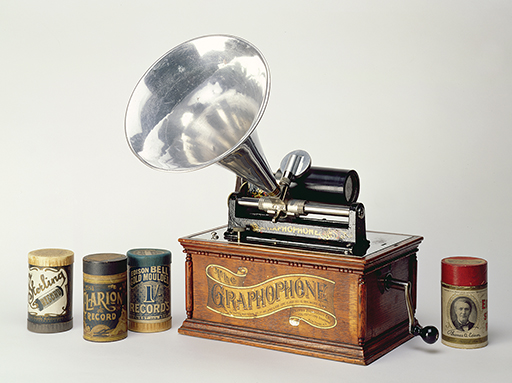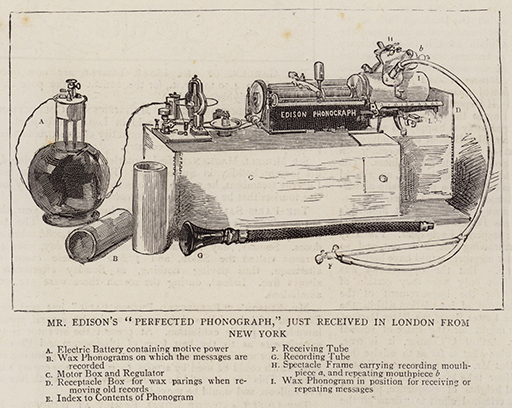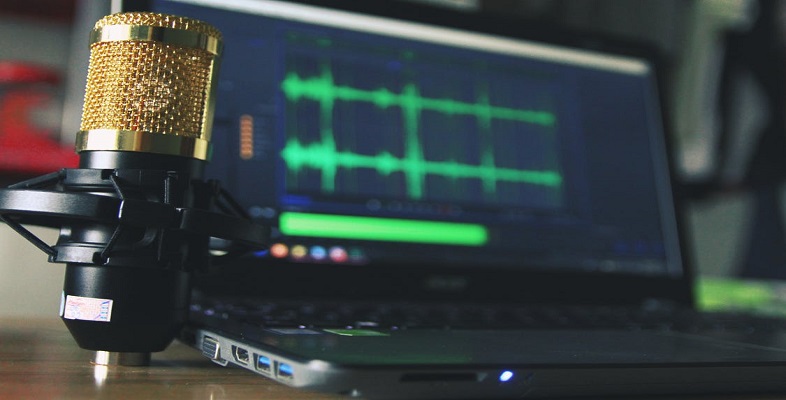2.3 Bell and Tainter

Following his invention of the phonograph Edison took a break from working on recording technology. Alexander Graham Bell (1847–1922), who had risen to prominence through his invention of the telephone, set about developing a recording machine with the assistance of his cousin Chichester Bell (1848–1924), a chemical engineer, and Charles Tainter (1854–1940), a scientist and instrument maker. By 1887 Bell and Tainter had succeeded in producing a recording machine they called the graphophone (meaning ‘sound-pencil’). The graphophone was largely similar to the phonograph, but in place of tin-foil they used cylinders of hard wax coated onto cardboard sleeves as the recording medium. This was a great technical advance, for it not only gave much greater quality of reproduction but also allowed the recording to be replayed many times.

When Edison returned to recording technology, his ‘Perfected Phonograph’ looked remarkably similar to the graphophone. However, Edison used a solid wax cylinder rather than a wax-coated cardboard sleeve. This allowed the cylinder surface to be shaved, erasing the original recording and allowing the cylinder to be re-used.
The Columbia Phonograph Company recorded popular songs of the day on cylinders. They could be played back using specially adapted ‘coin-in-the-slot’ phonographs, which were situated in public places such as drugstores and saloons. Popular songs could be heard ‘for a nickel a time’. Their popularity demonstrated a public demand for recorded music.
By Christmas 1897 a $10 clockwork-powered graphophone was offered. To compete, Edison offered his clockwork-powered ‘Home Phonograph’ for $20 which, apart from minor modifications, sold for over 30 years.
